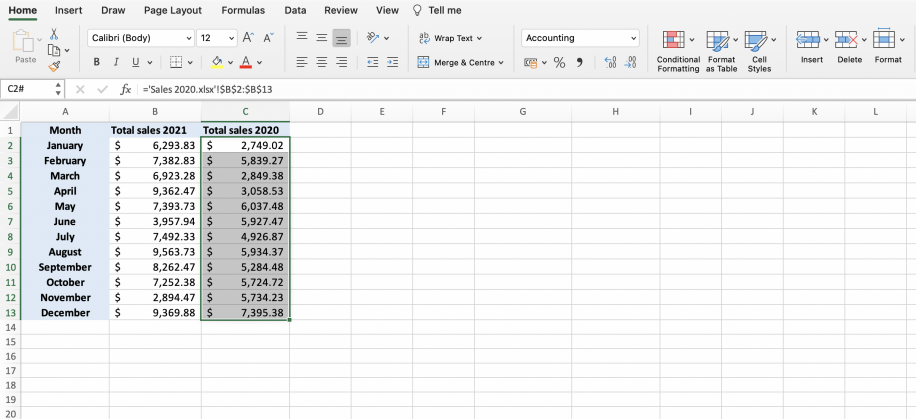Master Excel: Reference Data from Another Sheet Easily

In today's data-driven world, mastering Excel's ability to reference data from different sheets is a key skill that can significantly enhance your productivity. Whether you're dealing with complex financial models, tracking project timelines, or managing sales data, knowing how to link sheets will streamline your workflow and improve data accuracy. Let's dive into the best practices for referencing data from another sheet in Microsoft Excel.
Understanding Excel Sheet References

Excel organizes data into sheets within a workbook. Each sheet can be referenced using its name in your formulas, allowing for dynamic linking of data across different parts of your workbook. Here are some fundamental concepts:
- Sheet Naming: Sheets are typically named by default as “Sheet1,” “Sheet2,” etc., but they can be renamed for clarity.
- Cell References: You can reference a single cell or a range of cells from another sheet.
- Naming Conventions: Use meaningful sheet names to avoid confusion, particularly in large workbooks.
Basic Sheet Referencing

To reference data from another sheet:
- Identify the source sheet and the destination sheet.
- Type the equals sign (=) in the destination cell where you want to display the data.
- Switch to the source sheet by clicking its tab or type the sheet name followed by an exclamation mark (!). For example, if you want to reference cell A1 from ‘Sheet2,’ you would start your formula with
=Sheet2!A1. - Enter the cell or range you wish to reference. Here is an example:
Formula Description =Sheet2!A1Reference cell A1 from Sheet2 =Sheet2!A1:A10Reference range A1 to A10 from Sheet2 
Advanced Techniques

Using 3D References

3D references allow you to reference the same cell or range across multiple sheets. This is particularly useful for summarizing data:
=SUM(Sheet1:Sheet3!A1)
This formula will sum the contents of cell A1 in Sheet1, Sheet2, and Sheet3.
Dynamic Sheet Referencing

To make your references dynamic, you can use the INDIRECT function. Here’s how:
=INDIRECT(“‘”&SheetName&“’!”&CellReference)
SheetNamerefers to a cell that contains the name of the sheet you want to reference.CellReferencecan be another cell that contains the cell reference or a direct reference like “A1”.
This method is handy when you want to change the sheet referenced without altering the formula directly.
Linking Multiple Workbooks

Referencing data from another workbook can be done using:
=[WorkbookName]SheetName!CellReference
Make sure the workbook you’re linking to is open, or else the reference will be lost.
✅ Note: When referencing external workbooks, always keep a backup to prevent data loss if the external file becomes unavailable.
Common Challenges and Solutions

Broken Links

If the source workbook or sheet changes its name or location, you’ll encounter broken links. To solve this:
- Use the
Edit Linksoption to update links in your workbook. - Ensure that the source file path remains consistent or use network paths for sharing files.
Performance Issues

Referencing large datasets or many sheets can slow down Excel:
- Use formulas like
OFFSETorINDIRECTwith caution as they can cause significant recalculations. - Consider using Power Query or Excel tables for managing large datasets more efficiently.
Formula Errors

Error messages like #REF! or #VALUE! can occur due to:
- Deleted or renamed sheets.
- Incorrect cell or range references.
- Using incompatible data types in formulas.
Summary

Mastering the art of referencing data from another sheet in Excel can significantly enhance your productivity and accuracy in managing data. From basic sheet referencing to advanced techniques like dynamic sheet referencing and linking multiple workbooks, you now have a toolkit to tackle most data linking scenarios. Remember:
- Use proper naming conventions for clarity and ease of maintenance.
- Stay vigilant about potential issues like broken links or formula errors.
- Explore Excel’s advanced functions to streamline your work processes.
How do I reference a cell from another sheet?

+
Enter the formula =SheetName!CellReference, replacing ‘SheetName’ with the actual name of the sheet and ‘CellReference’ with the desired cell or range.
What should I do if my reference breaks?

+
Use Excel’s Edit Links feature to update the path to the external workbook or adjust the sheet reference manually if the sheet has been renamed or moved.
Can I reference data from multiple sheets at once?

+
Yes, use 3D references or functions like SUMIFS, SUMPRODUCT, or use a dynamic reference with INDIRECT to link multiple sheets dynamically.